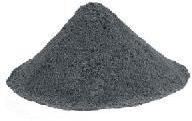
Microsilica Powder
20 Metric Ton (MOQ)
India is a major rice producing country, and the husk generated during milling is mostly used as a fuel in the boilers for processing paddy, producing energy through direct combustion and / or by gasification. These RHA are an organic micro-silica / amorphous silica, with silica content of above 90% having particle size of 25 microns mostly which can be used as a admixture in a big way to make special concrete mixes.Applications of Organic Micro Silica Powder :These RHA is a good super-pozzolans, which can be used in a big way to make special high performance concrete mixes, High strength, low permeability concrete, Concrete in marine environments, Industrial flooring, Chemical storage tanks, Basements and sewerage pipelines, Water tanks and sumps, Refractory mixes etc.Advantages of Organic Micro Silica Powder :The particle size of the cement is about 35 microns. There may be formation of void in the concrete mixes, if curing is not done in properly . This reduces the strength and quality of the concrete. Our product which is made out of this RHA is finer than cement having very small particle size of 25 microns, so much so that it fills the interstices in between the cement in the aggregate. That is where the strength and density comes from. And that is why it can reduce the amount of cement in the concrete mix.
...more
Micro Silica

Ground Granulated Blast Furnace Slag
20 Metric Ton (MOQ)
Ground Granulated Blast Furnace Slag (GGBS) is a by-product from the blast-furnaces used to make iron. It is a glossy silicate of Calcium, Iron, Alumina and other base materials produced in Blast Furnace. Lime stone is poured in B.F. with Iron-ore because it gives exothermic reaction which generates heat. Lime stone itself melts and combines with Silicate. Hence it is a mixture of Calcium Silicate, Iron and Aluminium Silicate and Cement is also a mixture Mono, Di, Tri and Tetra Silicates with Iron & Aluminium Silicates. Therefore GGBS is a meterial with Cementitious nature.We can supply GGBS of different quality and properties engineered to specific customer’s demands at very competitive rates, in bulk carriers, or packed in 50 kg HDPE bags. Applications of GGBS :GGBS is used to make durable concrete structures in combination with ordinary portland cement and/or other pozzolanic materials. GGBS has been widely used for its superiority in concrete durability, extending the lifespan of buildings from fifty years to a hundred years. Two major uses of GGBS are in the production of quality-improved slag cement with GGBS content ranging typically from 30 to 70%; and in the production of ready-mixed concrete. Advantages of GGBS :Concrete made with GGBS cement sets more slowly than concrete made with ordinary Portland cement, depending on the amount of GGBS in the cementitious material, but also continues to gain strength over a longer period in production conditions. This results in lower heat of hydration and lower temperature rises, and makes avoiding cold joints easier.Use of GGBS significantly reduces the risk of damages caused by alkali–silica reaction (ASR), provides higher resistance to chloride ingress - reducing the risk of reinforcement corrosion - and provides higher resistance to attacks by sulfate and other chemicals.
...more
cenosphere
20 Metric Ton (MOQ)
Cenospheres are hollow ceramic microspheres with special characteristics that enable them to be used in a wide numbers of applications. Cenospheres are light weight, inert hollow sphere of silica alumina filled with gas which naturally occurs in the combustion of coal. The sphere has nature’s most efficient shape with the lowest surface area compares to volume. It is these shapers which enables cenospheres in such a wide range of users other than simply being used as lightweight fillers.Cenospheres are having unique combination of low specific gravity controlled size and high compression, good thermal and accountable insulating property. Cenospheres are hard and rigid, light, waterproof, innoxious and insulative. This makes them highly useful in a variety of products, notably fillers.Cenospheres have a high melting point of 1200-1800 C. They are therefore excellent for use in high temperature insulating refractory’s and fire resistance coating and panels. We supply Cenospheres based on specific gravity, size distribution, colour etc. engineered to specific customer’s demands packed in Lined 500 kg Jumbo bags or Laminated 20 kg craft paper bags. Applications of Cenosphere : Oil well Cements Foam Carpet Backing Light Cement Boards Low density Polyethylene & Polypropylene Specialty Cement & Mortars Roofing Materials Acoustic Panels Special Industrial Paints & Coatings High Grade Refractories Fire Bricks, Tiles Advantages of Cenospheres : Reduced Raw Material’s Cost Reduced Resin Demand Reduced End Product Weight Improved Flow Ability Improved Insulation Values Resistant to Resin Absorption
...more
Fly Ash
Fly Ash usually refers to ash produced during combustion of coal. Fly ash is captured by electrostatic precipitators or other particle filtration equipment before the flue gases reach the chimneys of coal-fired power plants. It is rich in silica & alumina and spherical in shape. The properties of Fly Ash may vary widely, both physically and chemically, depending upon the nature of coal, the efficiency of coal combustion process and the selection process. Applications of Fly Ash :Fly Ash is used to produce hydraulic cement or hydraulic plaster or a partial replacement for Portland cement in Ready Mix Concrete production, which ensure the setting of concrete and plaster and provide concrete with more protection from wet conditions and chemical attack. It is also used for making fly ash bricks used for construction. Leading manufacturers use an industrial standard known as "Pulverized fuel ash for lime-Pozzolana mixture" using over 75% post-industrial recycled waste, and a compression process. This produces a strong product with good insulation properties and environmental benefits.
...moreBe first to Rate
Rate This